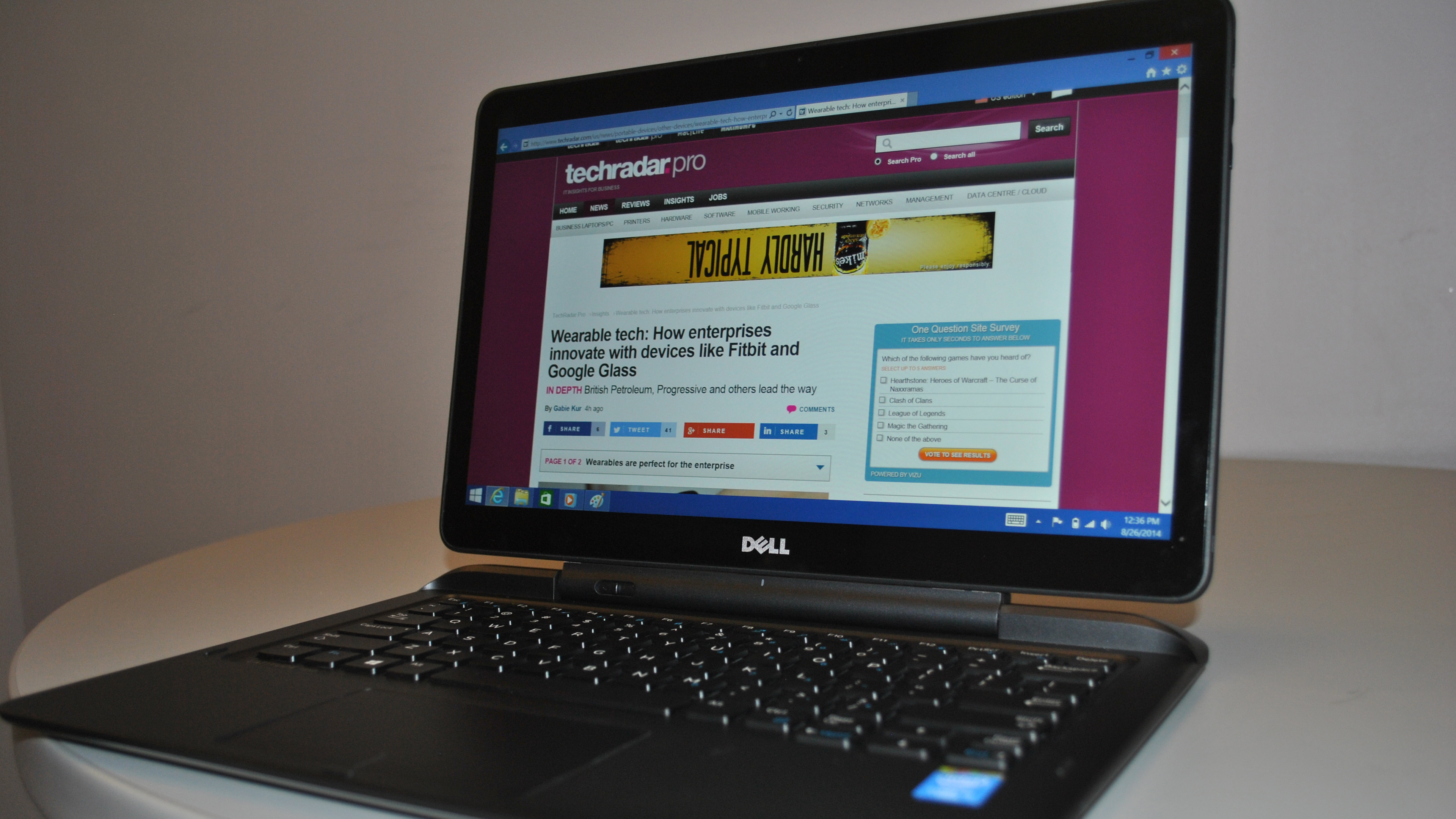Early Verdict
Dell's business class products are hit or miss. Unfortunately this is a miss. It looks great, performs decently, and is a secure device. However, its hybrid-design limitations, heft and accessory requirements make for a pedestrian device.
Pros
- +
Gorgeous looks
- +
excellent security
- +
decent performance
Cons
- -
Too heavy
- -
limited screen flexibility
- -
questionable physical endurance
Why you can trust TechRadar
Dell has done an excellent job providing business users with a variety of computing options. From the Precision workstations, to the Haswell-backed Venue tablets, to Dell's full line of OptiPlex all-in-one PCs, the Round Rock, Texas-based company has made a product for every possible business computing use case.
Unfortunately for Dell and its customers, there is a lack of consistency from product to product. For example: the Dell Venue 11 Pro and its powerful processor and gorgeous screen can pretty much go head-to-head with any business tablet on the market. However, the Dell OptiPlex 9030 PC is sexy, but simple, sluggish and too expensive.
With Dell, you're purchasing either a dud or a dynamic machine, with very little in between.
Perhaps Dell had this in mind when it created the low-risk, low-reward Latitude 13 7000 hybrid laptop-tablet (or as Dell refers to it: the 7000 2-in-1). This notebook-style hybrid is designed for business users that want the traditional computing experience of a laptop, but also require the flexibility to grab a tablet and head to the showroom floor or conference center.
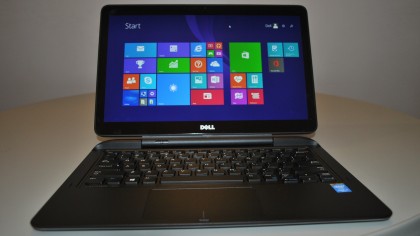
Design
You will love the hybrid's look. It features a 13.3" touchscreen display with full HD 1920 x 1080 resolution that produces a powerful colors and bright light. The 7000 is packed with a Broadwell Intel HD Graphics 5300 processor that isn't exactly luxurious (such as the Intel Iris Pro Graphics P6300), but it gets the job done for the average non-design-focused worker.
The tablet and keyboard feature a simple, plastic chassis that isn't quite as slick as the Dell XPS 13 and 15 or the Dell Inspiron 11 3000, but certainly outshines hybrid designs like the Asus Transformer. The 7000 looks and feels a lot like the Lenovo IdeaPad Yoga 11S. You will enjoy the perfectly spaced keys, which are spill-proof for clutzes like me, and the large trackpad that can always be found by my inaccurate thumbs.
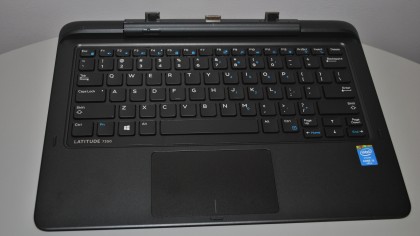
Unfortunately, Dell decided to go no-frills with how the keyboard and tablet interact with one another. For example: when attached to the keyboard, the tablet won't bend back farther than 135-degrees. So unlike the Yoga 11S and the Sony Vaio Duo 13, which both bend and twist to your heart's desire, the 7000 is almost completely inflexible when used as a laptop.
Although the hinge that combines the tablet to the keyboard is incredibly solid, the tablet wobbles when it's docked, and I worry that someone who quickly grabs either end of the machine might find themselves staring down at a smashed tablet or keyboard at his/her feet.
Tablet
I wanted to love the tablet. The screen is bright and large and I could envision myself streaming episode after episode of the soon-to-be remastered edition of The Wire on HBO GO. But when I undocked the tablet and lifted it up to my face I thought I was going to pull a bicep.
Dell lists the 7000 at 3.67 pounds. The tablet itself weighs 1.9 pounds, which is much too heavy.
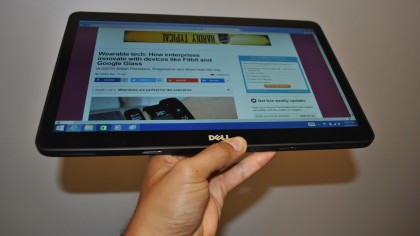
If you look at tablets on the market today, you'll see that the top players weigh around one pound. The iPad Air, which is nine inches wide is exactly one pound. The Dell Venue 11 Pro weighs 1.5 pounds at 10.8 inches, and the Microsoft Surface Pro 3 weighs 1.75 pounds at 11.5 inches. So you're getting more width with the 7000, but the width isn't worth the extra weight.
Once you get down to business, you'll be hard-pressed to find the nearly non-existent home button, which is the size of a pinhead at the top of the device. You'll be happy with how loud the volume can go, but you'll be really disappointed by how grainy the sound gets (especially as the bass starts bumping on "Bad Romance").
Typing on the touch keypad is annoying. There is about an inch of room left over on each side of the display. I'm not sure why the keypad doesn't extend all the way to the perimeter, but the extra keyspace would have been really useful.
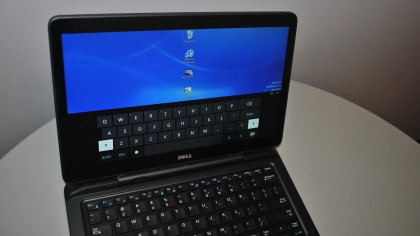
What is a hands on review?
Hands on reviews' are a journalist's first impressions of a piece of kit based on spending some time with it. It may be just a few moments, or a few hours. The important thing is we have been able to play with it ourselves and can give you some sense of what it's like to use, even if it's only an embryonic view. For more information, see TechRadar's Reviews Guarantee.
